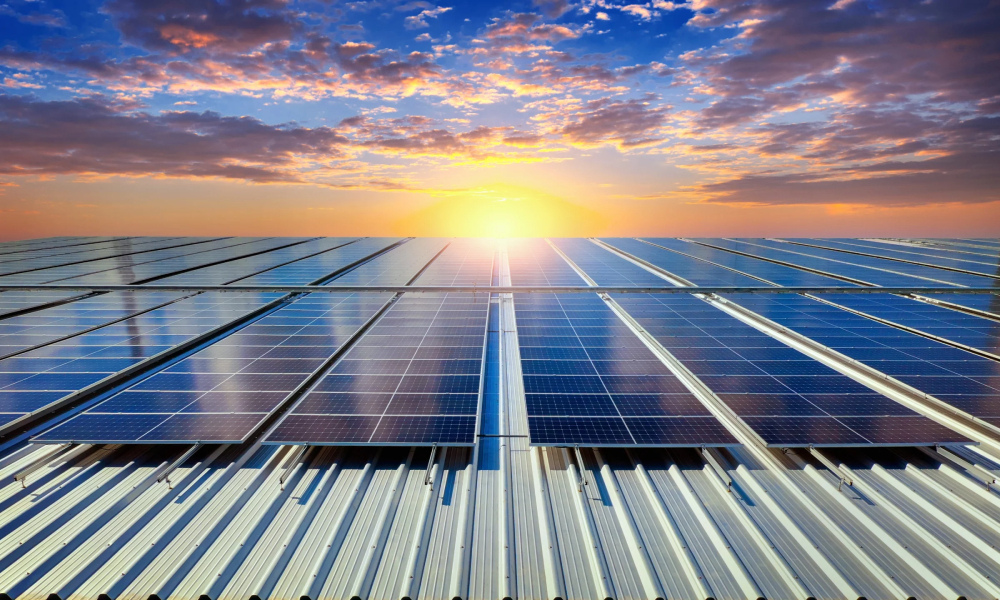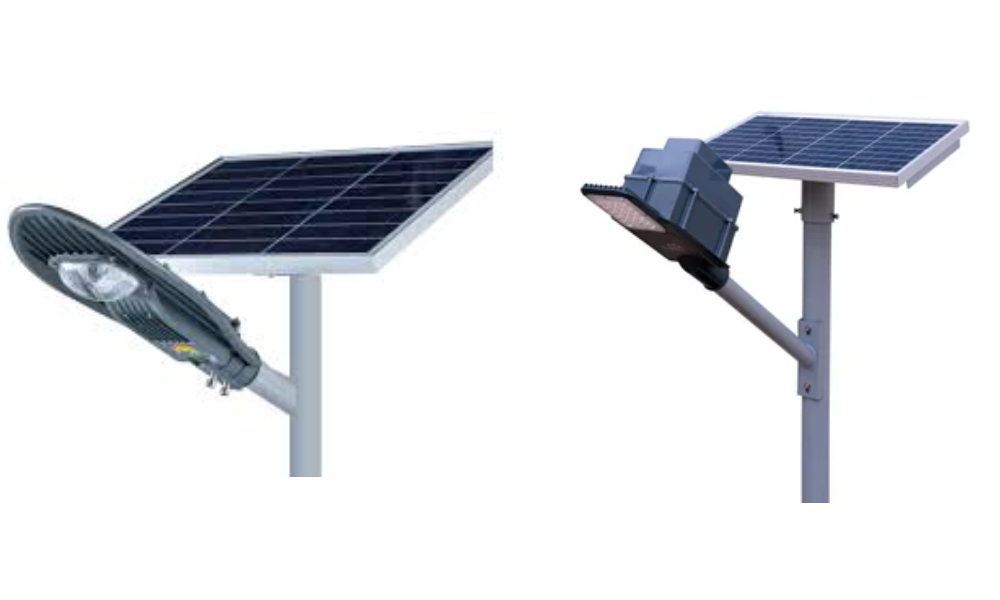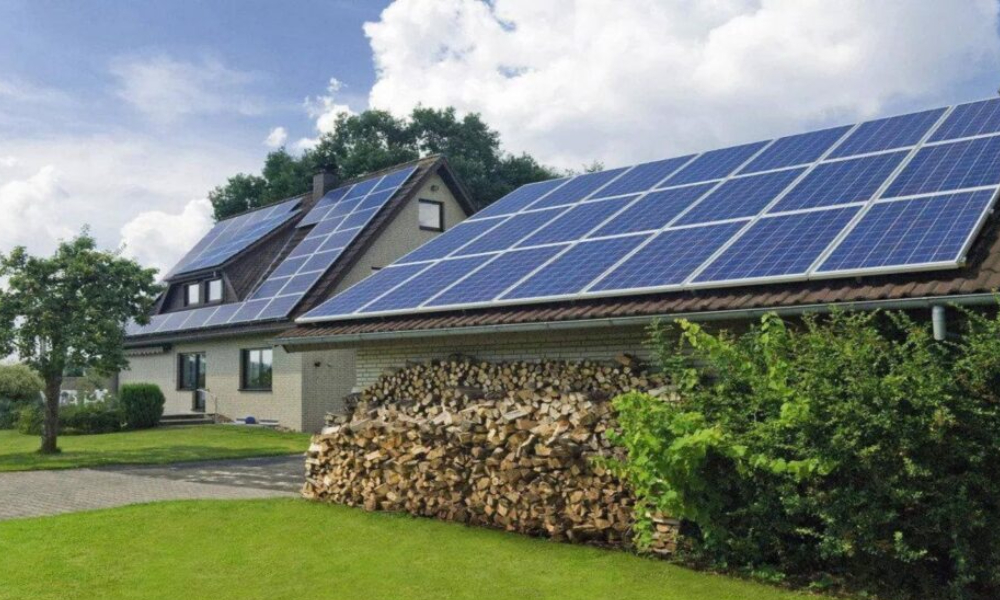Top On grid solar power plant installation in Uttar Pradesh | Sunwind Energy
Top On-Grid Solar Power Plant Installation in Uttar Pradesh
Uttar Pradesh is witnessing a powerful shift toward clean energy, and on-grid solar power plant installations are at the heart of this transformation. With rising electricity costs and increasing awareness of sustainable alternatives, more individuals, businesses, and institutions are embracing solar power. One of the key contributors to this green movement is Sunwind Energy, which has been helping residents and industries across the state harness solar energy through high-quality on-grid installations. If you're considering switching to solar in Uttar Pradesh, now is the perfect time.
Why On-Grid Solar Power Is Gaining Popularity in Uttar Pradesh
Uttar Pradesh enjoys ample sunlight throughout the year, making it an ideal region for solar power generation. On-grid solar systems, also known as grid-tied systems, are directly connected to the local electricity grid. They allow users to consume solar power during the day and draw electricity from the grid at night or during cloudy weather. Any surplus energy generated during the day is fed back into the grid, giving users credit through net metering.
Key Reasons for the Surge:
High Solar Potential
With more than 300 sunny days annually, the state offers excellent conditions for solar energy generation.
Net Metering Benefits
Consumers can reduce electricity bills significantly by exporting excess power to the grid.
Government Incentives
State and central subsidies make the initial investment more affordable.
Environmental Impact
Solar reduces dependency on fossil fuels, helping reduce air pollution and carbon emissions.
Benefits of On-Grid Solar Systems
Choosing an on-grid solar system comes with a host of advantages:
Cost Savings
Over time, users can save a substantial amount on their monthly electricity bills.
No Battery Requirement
These systems eliminate the need for expensive battery storage.
Scalability
On-grid systems are easy to scale, making them ideal for both residential and commercial use.
Low Maintenance
Modern solar panels are built to last and require minimal upkeep.
ROI in 5–6 Years
Thanks to energy savings and subsidies, most systems pay for themselves within a few years.
Where in Uttar Pradesh Is Solar Adoption the Highest?
Several cities and towns across the state are becoming leaders in solar energy adoption:
1. Lucknow
The capital city has embraced solar across public buildings, schools, and private homes. Local residents benefit from net metering and favorable policies.
2. Noida and Greater Noida
Known for their modern infrastructure, these areas are seeing a high number of solar installations on residential rooftops, commercial complexes, and gated communities.
3. Varanasi
As one of India’s oldest cities, Varanasi is setting a new example with solar-powered religious centers, hotels, and public infrastructure.
4. Kanpur
This industrial hub has seen a rise in solar installations for both homes and manufacturing units, helping cut operational costs significantly.
5. Agra
The city of the Taj Mahal is joining the green revolution with solar installations in both private and public sectors, including smart city initiatives.
Highlighted On-Grid Solar Installations in Uttar Pradesh
While thousands of small and large solar projects are active across the state, here are a few notable examples that reflect the growing momentum:
Residential Societies
Several urban residential communities have installed solar rooftops ranging from 30 kW to 300 kW. These systems significantly reduce power bills and contribute excess power to the grid.
Educational Institutions
Universities and colleges across the state have installed rooftop solar plants to power classrooms, laboratories, and administrative blocks. These not only save energy but also promote awareness among students.
Government Buildings
From district collector offices to municipal buildings, many public institutions now run partly on solar power. These installations are often used as pilot projects to inspire further adoption.
Industrial Units
Industries in cities like Kanpur and Noida are using large-scale rooftop solar systems (100 kW and above) to offset rising electricity tariffs and reduce their carbon footprints.
Government Schemes Supporting Solar Adoption
Uttar Pradesh’s renewable energy department, in coordination with the Ministry of New and Renewable Energy (MNRE), is offering several incentives to promote solar installations:
Capital Subsidy
Up to 40% subsidy is available for residential rooftop systems up to 3 kW.
Net Metering
Consumers are credited for the surplus power sent back to the grid, leading to lower bills.
Soft Loans
Banks offer solar loans at concessional rates, making it easier for middle-class households to invest in solar.
Ease of Approvals
The state government is simplifying the application and approval process for quicker installations.
The Step-by-Step Process of On-Grid Solar Installation
If you're considering installing an on-grid solar power plant, here’s what the process typically looks like:
Step 1: Site Assessment
An expert team visits your location to evaluate sunlight exposure, roof size, direction, and structural feasibility.
Step 2: System Design
Based on your electricity consumption and site conditions, a customized solar solution is designed to meet your energy needs efficiently.
Step 3: Net Metering Application
You’ll need to apply for net metering with your local DISCOM. This allows you to export extra solar power and get credit on your electricity bill.
Step 4: Installation
The solar panels, inverters, and other components are installed—usually within a few days—by trained professionals.
Step 5: Testing and Commissioning
After installation, the system is tested to ensure it’s working correctly and then commissioned for use.
Step 6: Monitoring
Many systems come with mobile apps or web dashboards so users can track performance, energy savings, and export units in real time.
Common Myths About On-Grid Solar Systems
Despite growing popularity, a few myths still prevent some people from adopting solar power:
“Solar is too expensive”
With falling equipment prices and subsidies, solar has become highly affordable.
“Solar doesn’t work in cloudy weather”
Panels generate electricity even on overcast days—just at a slightly lower efficiency.
“Maintenance is difficult”
Other than occasional cleaning and annual checks, solar systems require little to no maintenance.
“Only big rooftops qualify”
Even small rooftops can accommodate efficient solar setups with the right design.
Future Outlook for On-Grid Solar in UP
The future of solar in Uttar Pradesh looks bright. With increasing energy demand and rising power costs, solar offers a long-term, stable, and clean solution. In coming years, we can expect:
-
Wider adoption in rural areas thanks to awareness campaigns and subsidies.
-
Integration with smart meters and storage systems, enabling better load management.
-
Community solar projects, where entire neighborhoods can share a common solar plant.
Moreover, as the government continues to push for clean energy and carbon neutrality, the regulatory environment will likely become even more favorable for solar adopters.
Final Words
The shift to on-grid solar energy in Uttar Pradesh is more than a trend—it’s a transformation. Homes, businesses, and institutions are seeing tangible benefits in cost savings, reliability, and sustainability. The journey might start with a rooftop, but its impact reaches into our environment, economy, and energy independence. Whether you're looking to reduce your electricity bills or contribute to a greener future, this is the right time to make the switch. Sunwind Energy is proud to be a part of this solar revolution, supporting communities across the state in their transition to clean, reliable power.




